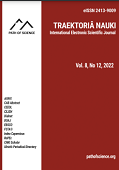Enhanced Electron Transport in Epitaxial Annealed Graphene Titanium Dioxide Heterojunction
Enhanced Electron Transport in Epitaxial Annealed Graphene Titanium Dioxide Heterojunction
Author(s): Nelson Mugambi, James M. Ngaruiya, Simon W. MugoSubject(s): Energy and Environmental Studies, Methodology and research technology
Published by: Altezoro, s. r. o. & Dialog
Keywords: graphene; titanium dioxide; annealing rates; transition; heterojunction;
Summary/Abstract: Titanium dioxide (TiO2) photocatalyst is a widely acceptable photo catalyst candidate due to its environment friendliness, cost-effectiveness, intrinsic electronics, photostability, good surface properties, and non-toxicity. However, TiO2 faces significant challenges for commercial exploitations, including high recombination rates, low quantum yield, and low visible light photo conversion efficiency. In this research, the optical properties of graphene TiO2 heterojunction were evaluated in measurements of Transmittance and Reflectance. Optical parameters in terms of WDD dispersion energy and dielectric constants were studied by annealing the films in the air up to 450 °C at 1 step, 2 °C/min and 1 °C/min annealing rates. Transmittance for the film annealed at 1 °C/min showed the highest transmittance of 86.57% and 74.07% for graphene and graphene TiO2, respectively. SCOUT software modelled Transmittance data to obtain refractive index. Refractive indices for pristine, 1 step, 2 °C/min, and 1 °C/min TiO2 films obtained at 550 nm were found to be 0.51, 034, 0.40 and 0.49, respectively. Porosity and dispersion energy for the lowest annealing rates (1 oC/min) was found to be 49 % and 12.7 eV in that order. Real and imaginary Interband transition (2.33–4.04) x 10-6 and (0.23–2.73) x 10-6 in that order, linear and nonlinear optical susceptibility (1.42–2.18) x 10-1 and (4.12–22.50) x 10-14, optical conductivity (2.51–13.2) x 1013 and electrical conductivity (3.89–4.60) x 1010 were enhanced with decreasing annealing rates. This is due to pole filing, film densification, increased lattice absorption and scattering centres and improved crystallinity of the films due to heat treatment and large-area graphene anchoring. The findings revealed that annealing graphene - TiO2 passivates its surface, reducing its boundary traps owing to quantum confinement effects and improving the electron transport throughout the heterojunction.
Journal: Traektoriâ Nauki
- Issue Year: 9/2023
- Issue No: 5
- Page Range: 2001-2012
- Page Count: 12
- Language: English

